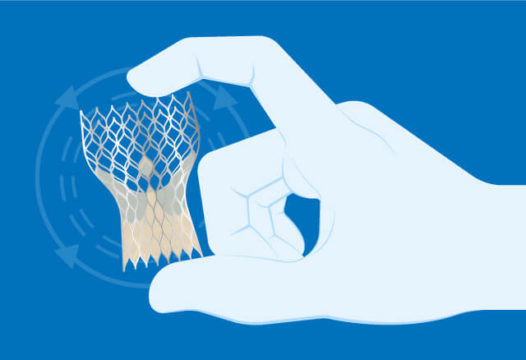Valvular heart disease management guidelines were updated last week by the AHA and the ACC.

The last complete version had been published in 2014; therefore many of its recommendations have become obsolete before the latest evidence.
The studies that made the FDA approve TAVI for low-risk patients are probably the most important incorporations.
They also incorporated the latest evidence with longer followups to inoperable patients of intermediate and high risk such as SURTAVI (intermediate risk), PARTNER A (high risk), PARTNER B (inoperable), PARTNER 2 (intermediate risk), CoreValve (high risk) and the NOTION (low and intermediate risk).
Unfortunately, the POPular TAVI outcomes, with the most recent evidence on post procedural anticoagulation, was not incorporated.
Read also: Pending Challenges in Transradial Access
Something with no impact on patient prognosis which does impact the way physicians communicate, was giving up the term valve replacement (TAVR) in favor or valve implantation (TAVI), which takes into account the fact that the native valve is still in place, as opposed to what happens in surgical procedures. Now the terminology is the same on both sides of the Atlantic, seeing as Europe had adopted the acronym TAVI from the beginning.
It also included the COAPT and MITRA-FR outcomes to update mitral regurgitation management.
Read also: Intravascular Imaging: A Universal Approach for Angioplasty Optimization.
We include here the 10 most relevant points of the new guidelines, just to incite your curiosity, and as an invitation to read the whole document, attached at the end of this article.
- Heart valve procedures have to be classified according to symptoms, valve anatomy, valve dysfunction and ventricular/pulmonary circulation.
- Everything has to be taken into account: clinical background, prior checkup followed by basic non-invasive studied such as electrocardiogram, chest x ray, and transthoracic echocardiography. In case there were any questions or contradicting results, we should follow with non-invasive studies such as CT scans, MRIs, transesophageal echocardiography, or stress tests. An invasive study will be necessary to define coronary anatomy, which could tilt the scales for or against one or the other strategy.
- For most patients with heart valve disease and atrial fibrillation, the CHA2DS2-VASc should guide the anticoagulation treatment. Except for patients with rheumatic mitral stenosis or mechanical prosthesis (especially with atrial fibrillation) where the only option are vitamin K antagonists.
- All severe heart valve disease cases considered for intervention should be assessed by a multidisciplinary team.
- Aortic stenosis intervention should by based mainly on symptoms and ventricular function. Early intervention could be considered with adverse stress test outcomes, biomarkers, very fast progression or the presence of critical stenosis.
- Based on TAVI expansion, treatment election for aortic stenosis should be shared based on life-long risk and the benefits associated to the valve per se (biological vs mechanical) and the procedure (TAVI vs surgery).
- Intervention of a failed valve should be based on symptom relief and prevention of irreversible valve function deterioration. Seeing benefits at long term and the lower acute risk, we have been able to lower intervention threshold.
- Mitral valve edge-to-edge repair might benefit very symptomatic patients with degenerative mitral regurgitation and very high or unacceptable surgical risk and also a select group of patients with symptomatic functional mitral regurgitation despite optimal medical treatment for cardiac failure.
- Surgical intervention to the severe symptomatic tricuspid valve can improve symptoms and reduce hospitalization if done before right ventricle deterioration or failure of liver or kidney function.
- Percutaneous treatment of a dysfunctional biological prosthesis is reasonable in select patients. Dysfunction might be due to valve degeneration or paravalvular leak with no active infection.
Original Title: 2020 ACC/AHA guideline for the management of patients with valvular heart disease: a report of the American College of Cardiology/American Heart Association Joint Committee on Clinical Practice Guidelines.
Reference: Otto CM et al. Circulation. 2021;143:e00–e00. DOI: 10.1161/CIR.0000000000000923.
Subscribe to our weekly newsletter
Get the latest scientific articles on interventional cardiology





